
ALL OF THE utes you see here are rated to tow 3500kg, but rarely do. Trouble is, once you hook up 3500kg behind any of them you can’t carry much (if anything) legally in the tub once you have a driver and passenger onboard.
These utes are typically used to tow something in the order of 2500 to 3000kg and also carry some sort of payload, given the driver and passengers are all payload, as is the tow bar and any other fitted accessories such as bullbars and canopies. And that’s before you put anything in the tub.
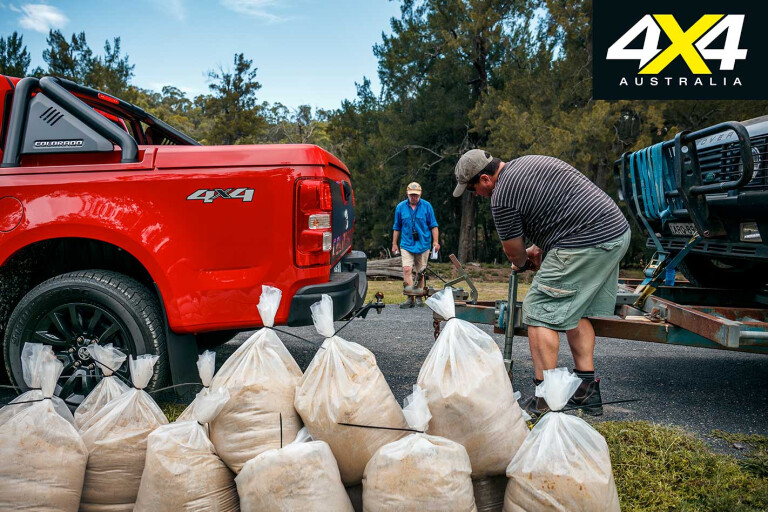
With that in mind, we decided on a more real-world test of towing 2500kg while carrying 450kg in the tub – add a driver and passenger and the payload’s about 600kg, not including the towball download. As it played out we added a total of 3144kg to each ute’s Gross Combined Mass (GCM), comprising the classic Range Rover on a tandem-axle car trailer, the sandbags in the tub, and driver and passenger onboard.
With these utes weighing between 2000kg to near 2300kg, and the maximum permissible GCMs varying from 5950kg to 6180kg, the utes were typically operating around 600kg to 750kg below maximum GCM. However, they were still asked to work hard, given they carried and towed a weight equal to one-and-half times their unladen weight.
If you think we were going to let our utes off lightly, we weren’t. Part of our test was a very steep climb – a 15 per cent average gradient, but notably steeper in parts – over 1.5km. On the steepest pinch it had three sharp (one a near-stop hairpin) bends, which meant slowing right down to a slow and safe speed and therefore losing most momentum, before accelerating back to speed (or at least trying to) on the straight sections of road between the bends. As it turned out it was mostly a full-throttle slug in first and second gears.
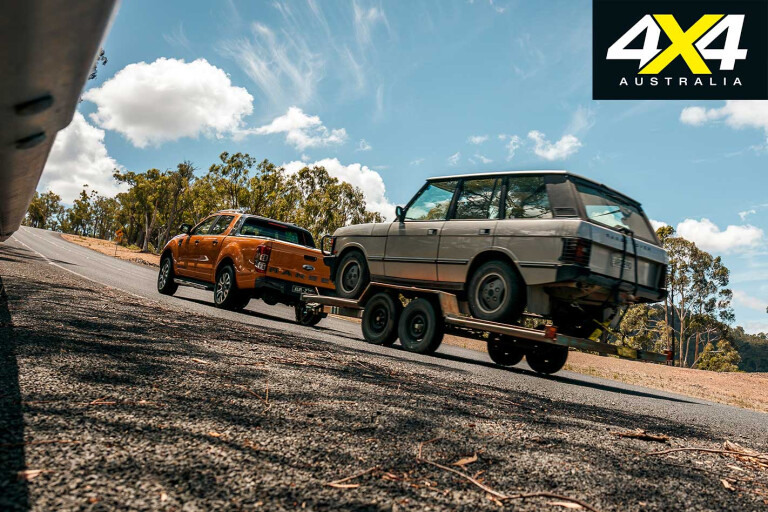
This was repeated three times for each ute, with the purpose of testing the powertrain under full-throttle climbing loads and maximum engine-braking descent loads. The climbing runs were all timed. The descents were a decent test for the brakes; although, they were deliberately slow and steady, given the steep incline and added weights, and relied largely on engine braking. The trailer was fitted with electric brakes, and all utes had electric trailer-brake controllers.
The general part of the test, conducted on an undulating and sometimes bumpy rural road, tested general chassis stability and powertrain performance under typical touring conditions at highway speeds. The incentive of this test was to see how the powerful and more expensive V6 utes from Mercedes-Benz and Volkswagen compared to the popular and affordable models from Ford, Holden and Isuzu. Comparing the two engines now available in the Ranger (the 3.2-litre ‘five’ and the new 2.0-litre bi-turbo) was also of much interest.
The 2019 Tow Test Contenders

2019 FORD RANGER 3.2 WILDTRAK SPECS:
Engine: 3.2-litre 5-cyl turbo diesel
Max power: 147kW @ 3000rpm
Max torque: 470Nm @ 1750-2500rpm
Transmission: 6-speed auto
4x4 system: Dual-range part-time
Kerb weight: 2278kg
GVM: 3200kg
Payload: 922kg
Towing capacity: 3500kg
Towball Download (max): 350kg
GCM: 6000kg
Fuel tank capacity: 80 litres
ADR fuel consumption: 8.9L/100km
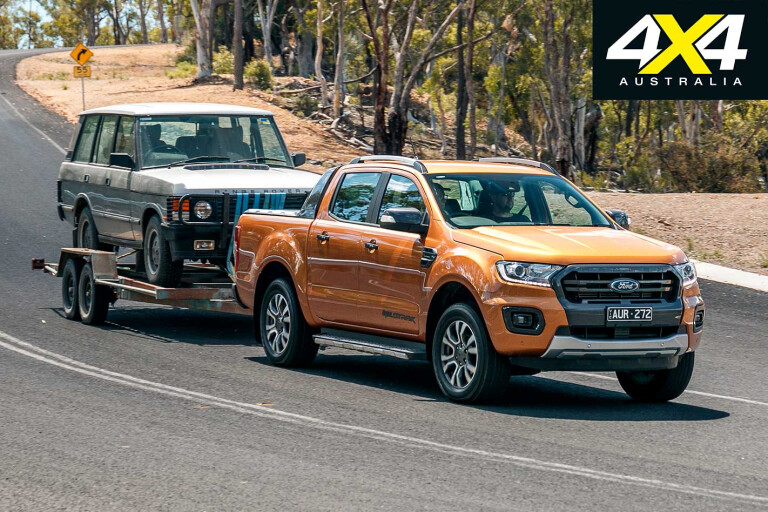
2019 FORD RANGER 2.0 WILDTRAK SPECS:
Engine: 2.0-litre 4-cyl bi-turbo diesel
Max power: 157kW @ 3750rpm
Max torque: 500Nm @ 1750-2000rpm
Transmission: 10-speed auto
4x4 system: Dual-range part-time
Kerb weight: 2246kg
GVM: 3200kg
Payload: 954kg
Towing capacity: 3500kg
Towball Download (max): 350kg
GCM: 6000kg
Fuel tank capacity: 80 litres
ADR fuel consumption: 7.4L/100km
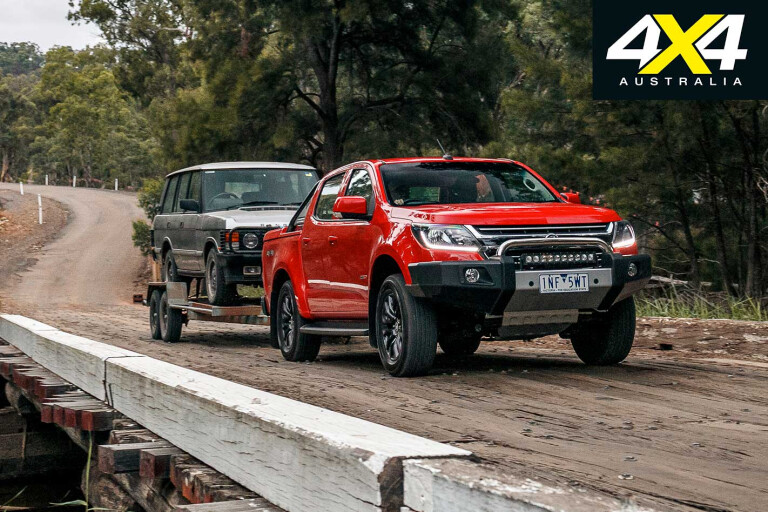
2019 HOLDEN COLORADO LT SPECS:
Engine: 2.8-litre 4-cyl turbo diesel
Max power: 147kW @ 3600rpm
Max torque: 500Nm @ 2000rpm
Transmission: 6-speed auto
4x4 system: Dual-range part-time
Kerb weight: 2102kg
GVM: 3150kg
Payload: 1048kg
Towing capacity: 3500kg
Towball Download (max): 350kg
GCM: 6000kg
Fuel tank capacity: 76 litres
ADR fuel consumption: 8.7L/100km
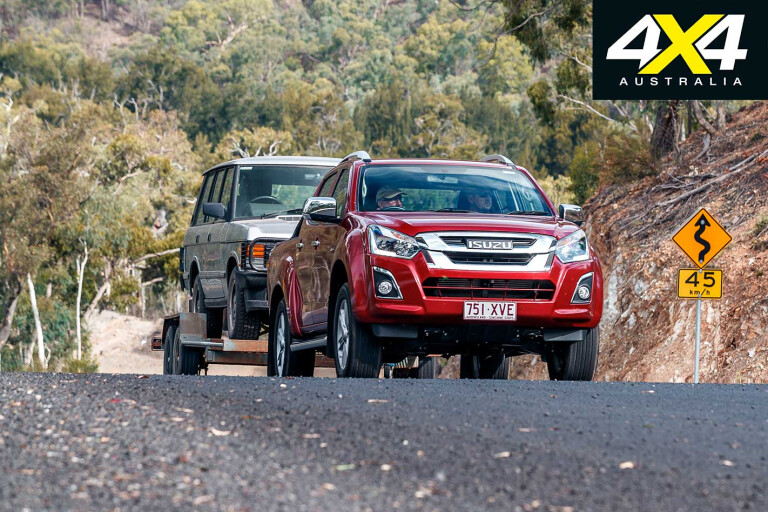
2019 ISUZU D-MAX LS-T SPECS:
Engine: 3.0-litre 4-cyl turbo diesel
Max power: 130kW @ 3600rpm
Max torque: 430Nm @ 2000-2200rpm
Transmission: 6-speed auto
4x4 system: Dual-range part-time
Kerb weight: 2026kg
GVM: 3050kg
Payload: 1024kg
Towing capacity: 3500kg
Towball Download (max): 350kg
GCM: 5950kg
Fuel tank capacity: 76 litres
ADR fuel consumption: 7.9L/100km
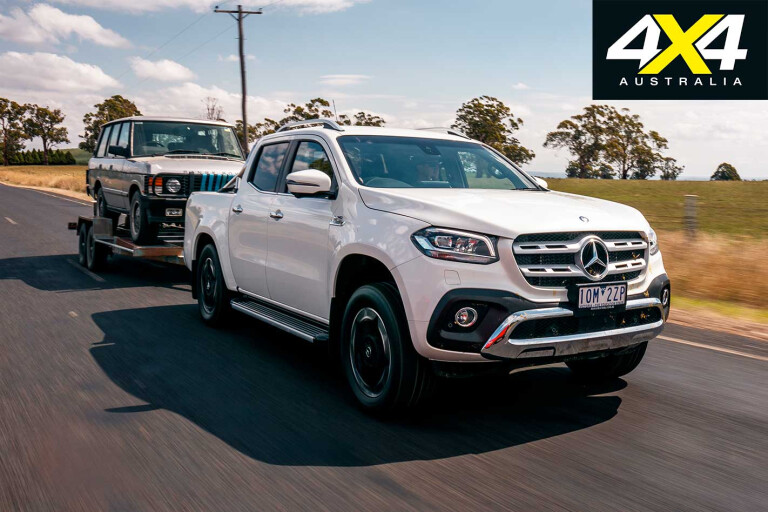
2019 MERCEDES-BENZ X350d POWER SPECS:
Engine: 3.0-litre V6 turbo diesel
Max power: 190kW @ 3400rpm
Max torque: 550Nm @ 1400-3200rpm
Transmission: 7-speed auto
4x4 system: Dual-range full-time
Kerb weight: 2190kg
GVM: 3250kg
Payload: 1060kg
Towing capacity: 3500kg
Towball Download (max): 350kg
GCM: 6180kg
Fuel tank capacity: 80 litres
ADR fuel consumption: 8.8L/100km
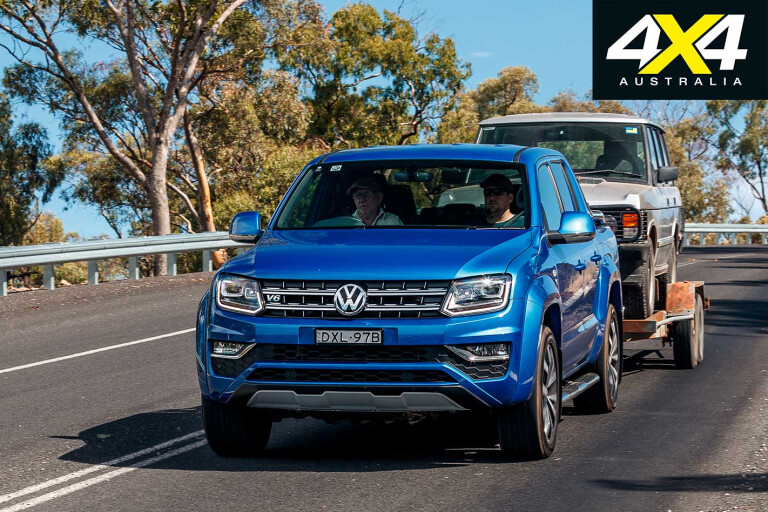
2019 VOLKSWAGEN AMAROK 580 SPECS:
Engine: 3.0-litre V6 turbo diesel
Max power: 190kW @ 3250-4500rpm
Max torque: 580Nm @ 1400-3000rpm
Transmission: 8-speed auto
4x4 system: Single-range full-time
Kerb weight: 2296kg
GVM: 3080kg
Payload: 785kg
Towing capacity: 3500kg
Towball Download (max): 300kg
GCM: 6000kg
Fuel tank capacity: 80 litres
ADR fuel consumption: 8.9L/100km

COMMENTS